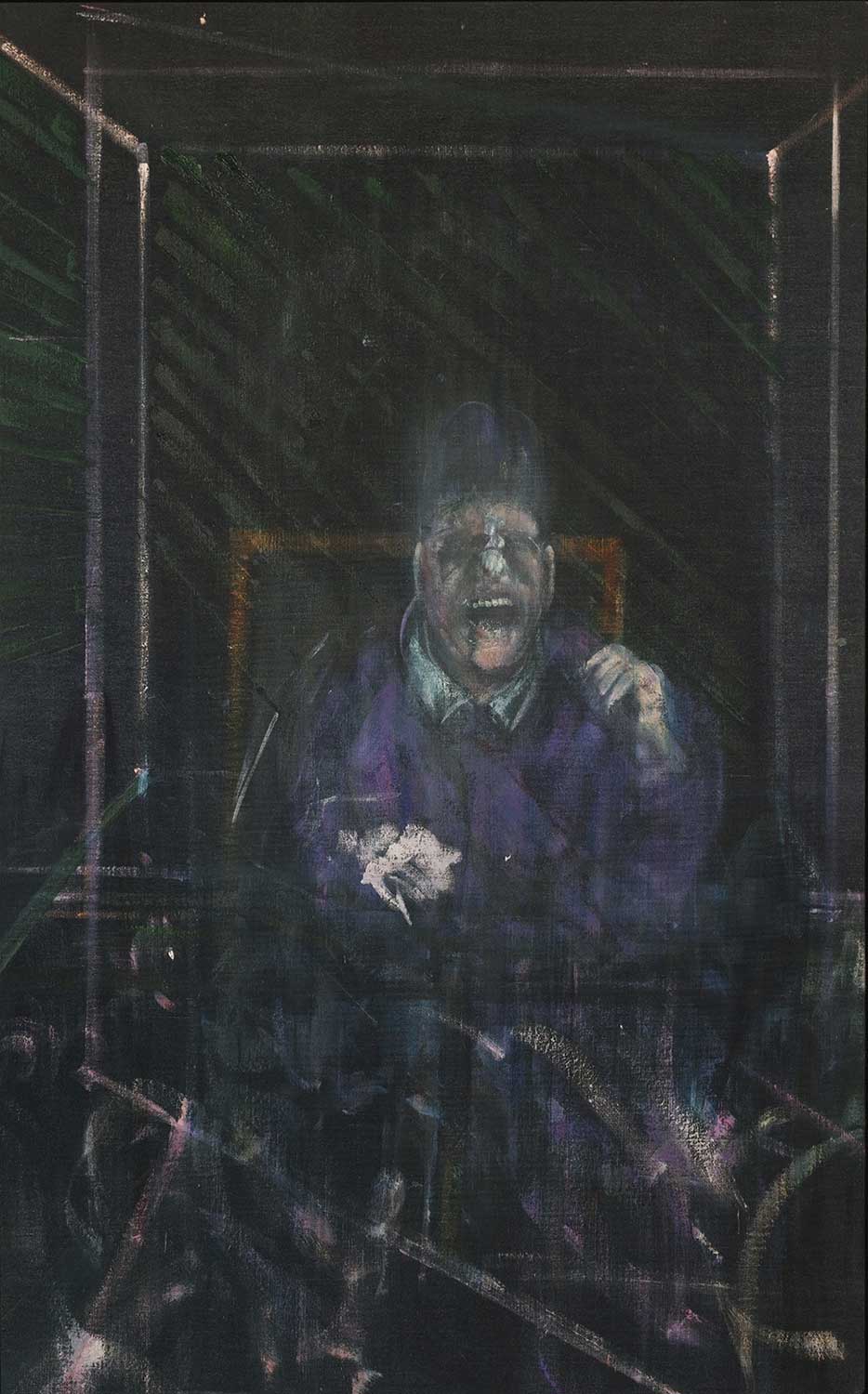Why does Francis Bacon's portrayal of Pope Innocent X evoke such strong emotional responses? The truth lies in the raw, unfiltered expression of human vulnerability and existential dread that permeates his work. Bacon's reinterpretation of Diego Velázquez's masterpiece is not merely an homage but a profound critique of power, isolation, and the fragility of human existence.
Bacon worked on his pope paintings for over two decades, meticulously reworking the theme inspired by Velázquez's Portrait of Pope Innocent X. These works, created between the late 1940s and early 1960s, are among the most iconic images in modern art. Each painting captures the essence of the original portrait while infusing it with a sense of psychological torment and existential angst. In Study after Velázquez's Portrait of Pope Innocent X (1953), one of his most celebrated pieces, Bacon transforms the serene figure of the pope into a screaming, isolated individual trapped within a claustrophobic cage-like structure. This radical departure from tradition challenges viewers to confront uncomfortable truths about authority, spirituality, and the human condition.
| Biographical Information | |
|---|---|
| Name: | Francis Bacon |
| Date of Birth: | 28 October 1909 |
| Place of Birth: | Dublin, Ireland |
| Date of Death: | 28 April 1992 |
| Place of Death: | Madrid, Spain |
| Education: | Self-taught artist |
| Career Highlights: | - Renowned for his figurative paintings - Pioneering figure in post-war British art - Best known for his series of screaming popes - Influenced by existentialist philosophy and surrealism |
| Notable Works: | - Study after Velázquez's Portrait of Pope Innocent X (1953) - Three Studies for Figures at the Base of a Crucifixion (1944) - Head VI (1949) |
| References: | Tate Modern - Francis Bacon |
Bacon's fascination with Velázquez's Portrait of Pope Innocent X stemmed from its ability to convey both grandeur and humanity. However, instead of focusing solely on the majesty of the papal office, Bacon chose to explore the inner turmoil and anxiety beneath the surface. His reinterpretations often depict the pope as a tormented figure, contorted by anguish and rendered almost unrecognizable through bold brushstrokes and vibrant colors. This approach aligns with Bacon's broader artistic philosophy, which sought to expose the raw realities of human experience.
In the context of post-war Europe, Bacon's work resonated deeply with audiences grappling with the aftermath of global conflict and existential uncertainty. The screaming pope became a symbol of universal suffering, transcending religious or historical associations. By placing the pope in confined spaces—often surrounded by geometric forms resembling cages or frames—Bacon emphasized themes of entrapment and alienation. These elements contributed to the unsettling yet captivating nature of his paintings.
Bacon's technique involved layering multiple interpretations onto a single canvas. He frequently used photographs, reproductions, and even cinematic stills as references, blending them with his own imagination to create complex visual narratives. For instance, in Study after Velázquez's Portrait of Pope Innocent X, the pope's distorted features recall Edvard Munch's The Scream, while the overall composition maintains a connection to Velázquez's original masterpiece. Such juxtapositions highlight Bacon's skill in synthesizing diverse influences into cohesive artworks.
The rediscovery of certain lost works further underscores Bacon's enduring legacy. Untitled (Pope), once presumed missing for decades, was eventually recovered and reintroduced to the public. Its reappearance offered fresh insights into Bacon's creative process and reinforced his status as one of the most significant artists of the 20th century. Exhibitions featuring these pieces continue to draw large crowds worldwide, reflecting their timeless appeal.
Beyond the technical aspects of his craft, Bacon's success can also be attributed to his philosophical outlook. He believed that art should challenge conventional norms and provoke thought rather than merely please the eye. This belief manifested itself in his choice of subjects, techniques, and presentation styles. Even critics who initially dismissed his work eventually acknowledged its significance in reshaping modern art discourse.
Art theorists have proposed various interpretations of Bacon's pope paintings. Some view them as critiques of institutionalized religion, highlighting the hypocrisy inherent in positions of power. Others see them as explorations of identity and selfhood, questioning what it means to occupy roles traditionally associated with authority and reverence. Regardless of perspective, there is consensus that Bacon's contributions significantly expanded the boundaries of contemporary art.
His influence extends beyond painting into other disciplines, including literature, film, and performance art. Writers such as Samuel Beckett and Jean-Paul Sartre found parallels between their existential themes and Bacon's visual representations. Filmmakers like David Lynch cite him as an inspiration for their atmospheric depictions of psychological distress. Such cross-disciplinary connections demonstrate the far-reaching impact of Bacon's oeuvre.
Today, Bacon's Study after Velázquez's Portrait of Pope Innocent X remains one of the most analyzed works in art history. Scholars continue to debate its meanings, implications, and relevance to current discussions about representation and power dynamics. Meanwhile, collectors vie for ownership of his rare pieces, driving auction prices to unprecedented levels. Despite this commercial success, however, Bacon himself remained indifferent to material wealth, prioritizing artistic integrity above all else.
Ultimately, Francis Bacon's reinterpretation of Velázquez's Pope Innocent X represents more than just a stylistic evolution; it embodies a fundamental shift in how we perceive and engage with art. Through his innovative approach, he invites us to question our assumptions about beauty, truth, and reality itself. As long as humanity grapples with these eternal questions, Bacon's legacy will endure, inspiring future generations to push the limits of creativity and understanding.



